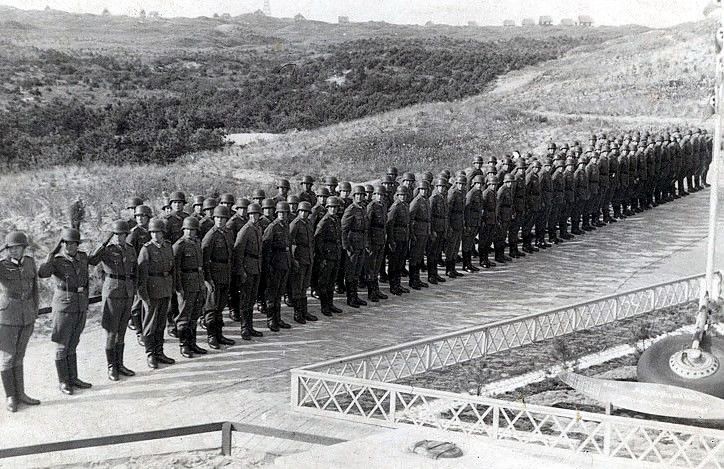German Positions in the Dunes
In the dunes near Hollum and Ballum, around 105 bunkers were built, ranging from troop shelters and kitchen bunkers to radar posts, searchlights, and anti-aircraft guns. Minefields and barbed-wire obstacles were intended to make an Allied landing impossible.
For the islanders, the construction also provided employment. Many men were able to work on building the positions and were not forced to go to Germany for the Arbeitseinsatz. Yet the militarization weighed heavily on village life: the presence of hundreds of German soldiers turned the quiet island into a military stronghold.
Daily Life and Oppression
Although Ameland did not experience large-scale battles, the occupation affected every aspect of life. Activities such as beachcombing, celebrating Saint Martin, or fishing were restricted. Islanders had to surrender metal for the war industry, and their freedom of movement was severely limited.
The community did, however, resist on a small scale. Some residents hid people in their homes, helped protect young men from German authorities, or shared information. Others paid the highest price, such as Minne Keestra, who was killed for his quiet resistance.
Traces of War and Incidents
Air battles frequently took place over and around Ameland. Several aircraft crashed into the sea or on the island, including the American bomber Dixie Flyer in September 1944. There are still dozens of war graves on Ameland today, including German, British, Canadian, and Polish soldiers who died during missions in the region. In total, about 70 soldiers are buried on the island.
Liberation
While celebrations were already underway on the mainland, the people of Ameland had to wait several more weeks. It was not until 3 June 1945 that the last German soldiers left the island. After five years of occupation, this finally brought an end to a period of oppression, uncertainty, and forced adaptation.
